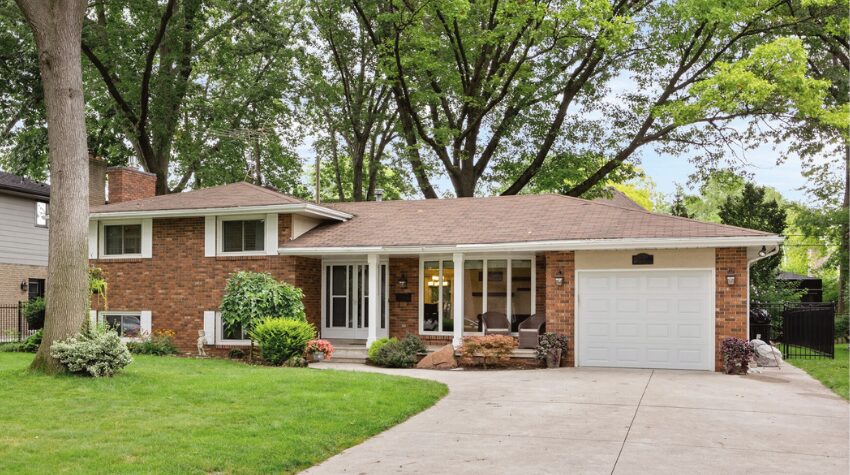
In 2011, Jackie and I bought our first home.
We weren’t chasing a deal or building a portfolio. We were just engaged and trying to find a place to live.
The house we bought? It was old. It smelled like smoke. It had green and purple carpet — in the bathrooms.
We looked at each other and thought, “What did we just do?”
But we fixed it up. We made it ours. And we lived there for over a decade.
All three of our kids were born while we were in that house. Our neighbours became close friends. Our roots got deeper with every year.
Eventually we needed more space and moved. But we didn’t sell that house.
We kept it. We started renting it out. Not because we were thinking like investors — but because it still mattered to us.
It was never just a property. It was our home.
I’ve been thinking about that house a lot lately. Especially while reading a report called The Great Sell-Off by John Pasalis.
It’s one of the clearest explanations I’ve seen of what’s really changed in the Canadian housing market.
Because let’s be honest — the conversation around housing today is broken.
We blame high prices on low supply. We talk about interest rates, immigration, and construction bottlenecks.
But we rarely talk about the real shift.
The report nails it: we’ve moved from seeing homes as places to live to treating them as vehicles for capital growth.
And once that shift happened, everything else started to change.
Government policy began to reward ownership over access.
We pulled back from affordable housing initiatives.
We moved away from renter protections.
And we leaned fully into homeownership as the path to financial security — and even national economic growth.
Real estate became a pillar of household wealth.
Then came securitization.
Mortgages became investment products. Home equity turned into a source of liquidity. The family home became a balance-sheet tool.
Instead of protecting housing as a basic human need, we quietly optimized it for financial returns.
And once that door opened, capital rushed in.
Today, nearly 1 in 3 homes in Canada are bought by investors.
That includes everyone from amateur landlords to large corporate buyers. And many of them aren’t buying homes to live in — they’re buying them to extract value.
That changes the game.
These buyers often have better financing, more equity, stronger credit, and fewer emotional constraints.
When they bid against families, they win.
And as prices go up, the feedback loop strengthens: more capital enters the market, and homeownership becomes even more out of reach for average Canadians.
This isn’t just about affordability.
It’s about access.
It’s not just a housing crisis — it’s a capital access crisis.
And unless we start questioning what the system is designed to do, we’ll keep ending up in the same place.
We’ll keep building homes, but not necessarily for the people who need them.
We’ll keep encouraging ownership, but only for those who already hold capital.
We’ll keep securitizing and leveraging, instead of building stability and affordability.
And here’s the thing — this isn’t some conspiracy. It’s just the natural outcome of treating homes like assets, instead of essentials.
But it comes at a cost.
Younger Canadians are being priced out. Wealth is consolidating. And the long-term purpose of housing is being quietly rewritten.
The system isn’t broken. It’s doing exactly what it was restructured to do.
The question is: are we okay with that?
Because if we want a different outcome — if we want housing that works for people, not just capital — we need to start asking different questions.
Not just “how many units can we build?” but “who are we building for?”
Not just “how do we stimulate homeownership?” but “how do we balance ownership with access?”
Not just “how do I grow my portfolio?” but “how do I contribute to a housing market that still functions for the next generation?”
That’s the deeper conversation. And it’s one we need to have.
Until next week,
Vince
P.S. Our first home taught me a lot. Not about leverage or equity appreciation — but about what really gives housing its value: roots, permanence, use. It wasn’t the best “investment” on paper, but it was one of the best decisions we ever made.
P.P.S. In a market shaped by speculation and easy credit, owning something real — something useful, income-generating, and anchored in actual need — might be one of the most powerful moves you can still make.








